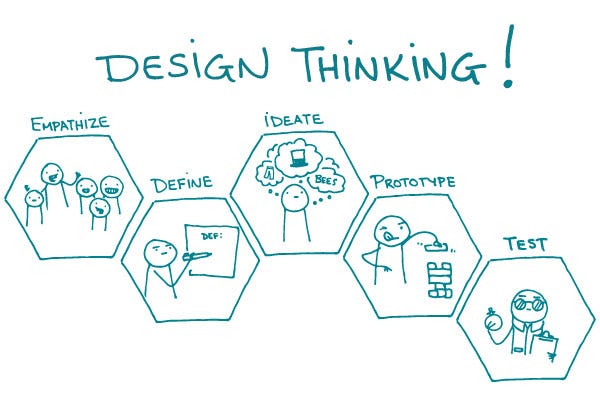Design thinking is a creative problem-solving approach that has gained popularity in the business world in recent years. It is a human-centered approach that focuses on empathy, experimentation, and iteration to solve complex problems. In this article, we will explore the role of design thinking in business problem-solving and its benefits.
What is Design Thinking?

Design thinking is a problem-solving approach that puts people at the center of the process. It involves understanding the needs and desires of the end-users and using that understanding to create innovative solutions. This approach involves five stages:
- Empathize: Understanding the needs and desires of the people who will use the product or service.
- Define: Refining the problem statement based on the insights gained from empathy.
- Ideate: Generating a range of possible solutions to the defined problem.
- Prototype: Creating a tangible representation of the solution to test and refine.
- Test: Testing the solution with end-users and refining it based on feedback.
The Benefits of Design Thinking in Business Problem Solving
Design thinking has several benefits when it comes to solving business problems. Here are a few:
- Focus on the User: By putting the end-user at the center of the process, design thinking ensures that the solutions created are relevant and useful.
- Innovation: Design thinking encourages experimentation and iteration, which leads to innovative solutions.
- Collaboration: Design thinking involves a multidisciplinary team working together to solve a problem. This approach encourages collaboration and diversity of thought, leading to better solutions.
- Efficiency: By testing and refining solutions early on in the process, design thinking can save time and resources in the long run.
- Competitive Advantage: Design thinking can give businesses a competitive advantage by creating unique and innovative solutions that meet the needs of their customers.
How Design Thinking Can be Applied to Business Problems

Design thinking can be applied to a wide range of business problems, from product design to customer service. Here are a few examples:
Product Design
Design thinking can be used to create new products or improve existing ones. By understanding the needs and desires of the end-users, businesses can create products that are more useful, relevant, and desirable. The prototyping and testing stages of design thinking allow businesses to test their ideas and refine them based on feedback from end-users.
Customer Service
Design thinking can also be used to improve customer service. By understanding the needs and desires of customers, businesses can create a better customer experience. This could involve creating a more user-friendly website, improving the checkout process, or creating a more efficient customer service system.
Process Improvement
Design thinking can also be used to improve business processes. By understanding the pain points in a process, businesses can create solutions that improve efficiency and reduce waste. The prototyping and testing stages of design thinking allow businesses to test their solutions and refine them based on feedback.
Design thinking is a powerful problem-solving approach that can help businesses create innovative solutions that meet the needs of their customers. By putting the end-user at the center of the process, businesses can create products, services, and processes that are more relevant, useful, and desirable. The benefits of design thinking include innovation, collaboration, efficiency, and a competitive advantage. By applying design thinking to their business problems, businesses can create solutions that are more effective and successful.















